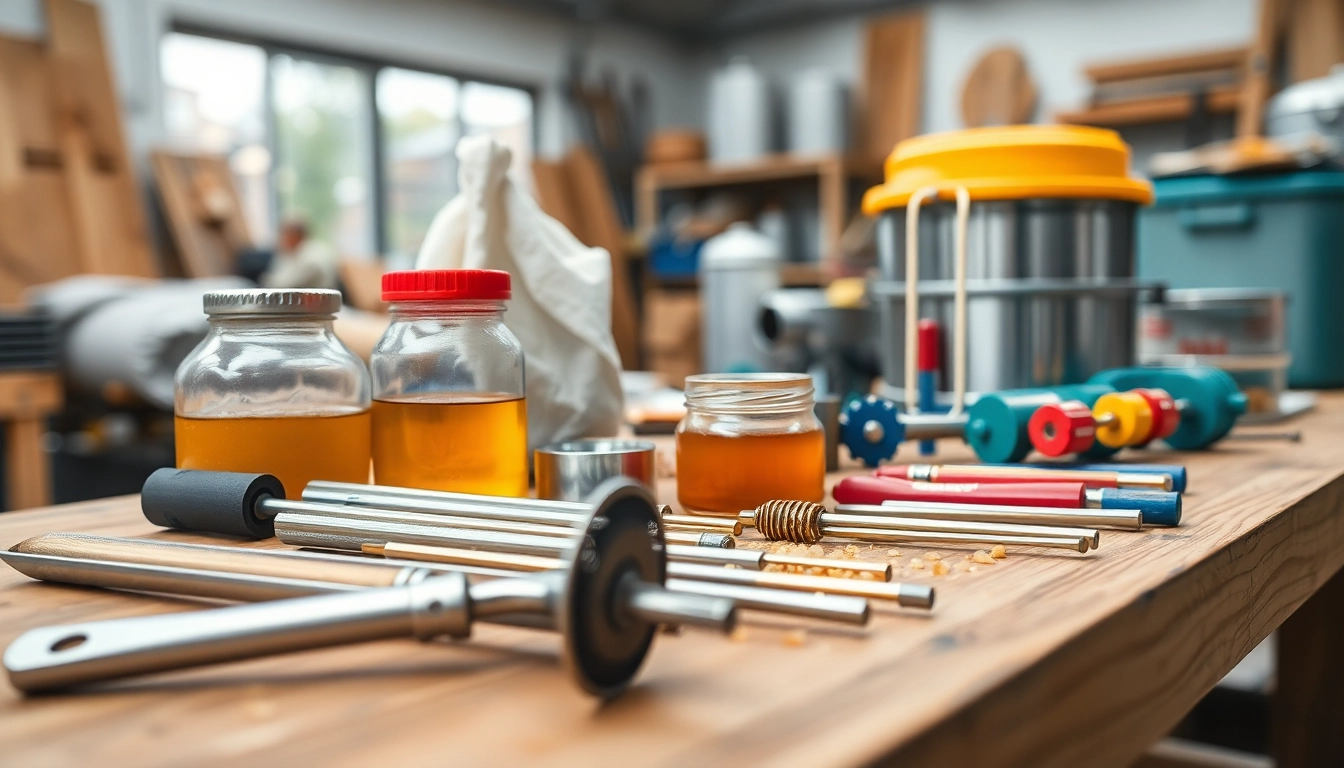Understanding the Basics of Material and Machinery for Beekeeping
Beekeeping, or apiculture, is a delicate blend of tradition and innovation, requiring the right combination of materials and machinery to ensure healthy colonies and productive honey harvests. Modern apiaries are increasingly utilizing advanced equipment to optimize efficiency, hygiene, and overall management. For those venturing into or upgrading their beekeeping operations, understanding the fundamental materials and machinery is crucial. To explore comprehensive options, visit our dedicated material y maquinaria para apicultura resource, which offers a wide array of high-quality equipment tailored for both novice and professional beekeepers.
Essential Equipment for Modern Apiaries
Today’s apiaries rely on various types of equipment designed to facilitate hive management, honey extraction, and colony health monitoring. Key components include hive structures, protective gear, and tools for hive inspection and maintenance. These materials are crafted from durable, food-grade, and hygienic materials to comply with strict health standards and ensure the safety of the bees and the end products. Modern machinery, such as honey extractors and processing tanks, are instrumental in increasing productivity and reducing labor costs.
Types of Materials and Their Benefits
The most common materials utilized in apiary equipment include high-quality wood, stainless steel, and food-grade plastics. Each offers particular advantages:
- Wooden Components: Traditional and natural, wooden frames and boxes are easy to modify and repair, providing a comfortable environment for bees. They are also immunized or treated to resist pests and decay.
- Stainless Steel: Known for its durability, hygiene, and resistance to corrosion, stainless steel is ideal for support antigoteo inoxidable (anti-drip supports), honey tanks, and processing equipment. It ensures sanitary conditions, easy cleaning, and longevity.
- Food-Grade Plastics: Used in containers like bidones and cubes, these plastics are lightweight, affordable, and resistant to chemical interactions, making them suitable for storing honey and food-grade liquids.
Key Machinery Features to Consider
When selecting machinery for beekeeping, focus on features that enhance efficiency, safety, and ease of use. Important considerations include:
- Capacity: Equipment should match the scale of your operation—whether small-scale or industrial.
- Material Composition: Opt for corrosion-resistant, food-grade materials, especially for honey tanks and containers.
- Automation Capabilities: Automated extractors and processing machines reduce manual effort and improve consistency.
- Ease of Maintenance: Machinery should be straightforward to clean and maintain, ensuring long-term use without deterioration.
Selecting the Right Support Antigoteo Inoxidable and Containers
Stainless Steel Support Antigoteo: Durability and Hygiene
The support antigoteo inoxidable (anti-drip stainless steel support) is a vital component in modern apiculture, especially for honey processing and storage. Its stainless steel construction ensures maximum hygiene, resistance to corrosion, and robustness, making it ideal for handling honey, food-grade liquids, and chemicals. These supports help prevent leaks and drips during transfer or processing, maintaining product purity and reducing waste.
Choosing Suitable Bidones and Cubes for Honey and Food-Grade Liquids
Proper selection of containers is essential to maintain product quality and comply with food safety standards. For honey, bidones of 300kg are widely used due to their large capacity and ease of handling with machinery such as pumps and conveyors. Food-grade cubes and bidons—such as those holding 75kg or 25kg—are manufactured from high-density polyethylene or other similar materials, ensuring no chemical contamination. These containers often feature secure lids, clear measurement markings, and durable construction for repeated use in demanding environments.
Installation and Maintenance Tips
Proper installation involves ensuring secure placement on stable surfaces to prevent tipping or damage. Regular cleaning with food-safe disinfectants, inspection for cracks or corrosion, and timely replacement of seals are critical to maintain integrity. Additionally, ensuring compatibility between equipment parts minimizes operational issues and extends service life.
Integrating Modern Machinery into Traditional Beekeeping Practices
Best Practices for Using Machinery to Increase Productivity
Integrating machinery into traditional practices requires a strategic approach. Automated honey extractors, for example, can significantly reduce extraction time and labor while improving yield quality. Establishing a workflow that minimizes human contact and contamination is key—think of conveyor systems for honey transfer or automated filtration units. Regular training for personnel on machinery operation ensures safety and maximizes benefits.
Automation and Manual Equipment: Advantages and Limitations
Automation streamlines critical tasks, enabling higher efficiency and consistent results. However, it requires upfront investment and maintenance. Manual tools and equipment still have their place, especially for small-scale operations or in areas with limited electricity. The combination of both approaches allows flexibility, cost management, and adaptation based on operational needs.
Case Studies and Real-World Examples
For example, a mid-sized apiary that adopted automated honey extraction machinery witnessed a 30% increase in productivity within the first year, along with improved product hygiene. Another farm combined traditional hive inspection with modern temperature monitoring systems to optimize colony health, demonstrating the complementary nature of old and new methods.
Ensuring Quality and Compliance in Material and Machinery for Beekeeping
Standards and Certifications to Look For
Ensuring equipment complies with local and international standards, such as ISO or NSF certifications, guarantees safety and quality. Food-grade containers must meet legislation regarding chemical composition and suitability for storage. Machinery should have CE marking (or equivalent) indicating compliance with safety directives.
Maintaining Equipment for Longevity and Safety
Proper maintenance routines include regular cleaning, lubrication, calibration, and inspection. Using appropriate cleaning agents prevents residue buildup that can harbor pests or bacteria. Scheduled maintenance prolongs machinery life, prevents unexpected breakdowns, and guarantees product safety.
Cost Analysis and Return on Investment
While high-quality machinery represents a significant initial expense, it often yields substantial long-term savings through increased efficiency, reduced labor, and higher product yields. Calculating ROI involves assessing increased production capacity, reduction in waste, and improved product quality. For example, investing in a durable stainless steel honey tank can pay off within a few years due to its extended lifespan and operational reliability.
Future Trends and Innovations in Apiary Materials and Machinery
Emerging Technologies in Beekeeping Equipment
Innovations include IoT-enabled hive monitoring systems, automated data collection, and remote control of temperature and humidity. New materials with antimicrobial properties are being developed to reduce contamination risks, while advances in robotics are paving the way for autonomous hive inspections.
Eco-Friendly and Sustainable Options
Sustainability is gaining importance, with eco-friendly materials such as recycled plastics, biodegradable bee-friendly compounds, and solar-powered machinery. These developments aim to reduce the environmental footprint of beekeeping practices while maintaining productivity and safety standards.
Adapting to Market Demands with Advanced Machinery
As consumer preferences shift toward organic and minimally processed honey, advanced machinery allows producers to meet these standards efficiently. High-capacity, precision equipment supports large-scale organic production, and adaptable packaging machines cater to diverse market needs.









